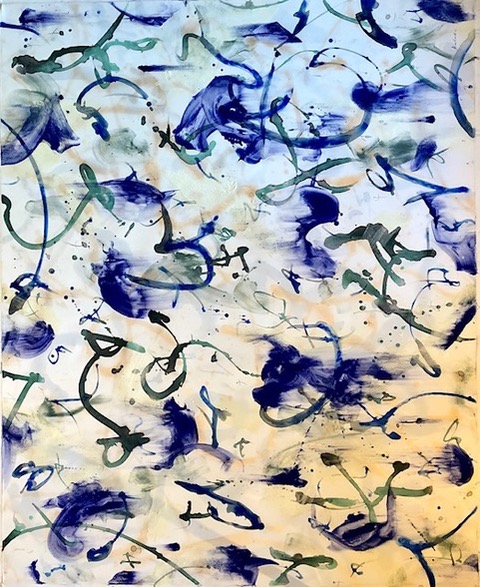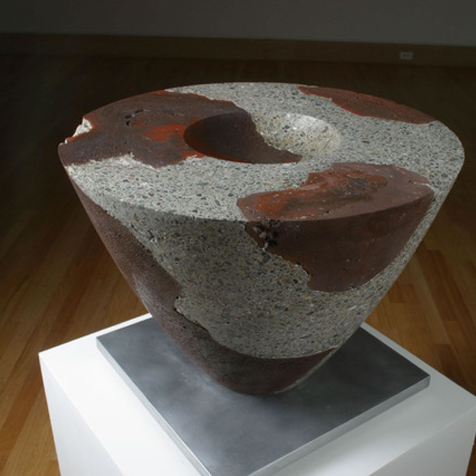Flow of the Brush
From the flow of the brush
Emanates in the distance, beyond the light
Just as a cosmic ray is reflected
on the scales of a sea messenger
from the dragon’s palace deep in the sea
The elements dance of azure-black ink
Combined with the gold-and-silver mica and charcoal
Though the shadow’s color purifies itself
Its eternal admiration soars
from the corner of the depths of the sky
to a route that leading back to nature
Letting the stream of sound
of ink and charcoal flow continuosly
expressing neither a point nor a line
Created from a clear starry dawn
Is the flow of the brush
In memory of my mother
2005
New Works
Please join us for an exhibition of new works by Masamichi Kotaki, at Iwasawa Oriental Art, beginning February 27, 2015. These works were created using hemp paper, sumi ink, mineral pigments, real gold powder, and Japanese paper.

Shoga, or Picture and Calligraphic Works: Decorative yet Delicate
Calligraphy retains an enchanting and mysterious spirit. When one sees the original handwritten characters on paper from many centuries ago, one would be in contact with the sophistication of the author and the period. Especially, in the ideographic characters, we can feel the beating pulse of “forms” that our predecessors, merely a part of the whole creation of nature from the past, made enormous efforts to tame the awe-inspiring wild gods of nature and captured their shapes within the works that survive. Only on a few occasions does the huge gap between mere text and works of art surprises one, when a simple theory stating, “Calligraphy and painting have the same origin” is argued for modern Japanese paintings.
Masamichi Kotaki’s past works invigorate the beauty of Japanese style seen in traditional Japanese paintings and calligraphy, as a possibility for contemporary Japanese art. The title of his series of works “Not Point, Not Line” reflects that Kotaki’s art does not stand on the fundamental structure of Western paintings. Lines and dots reminds us of the kana or sosho characters that stream out from strokes of his brush, and his own pictorial space mingled in the earth expressing the effect of water with watercolors, sumi and other materials. Kotaki is often categorized as “new Japanese paintings” due to his age. Yet, if an acceptable reason for the systematic classification lies in the traditional materials the artist uses, unlike most artists, Kotaki’s creativity is sincere. He paints with acrylic and sumi along with choosing from various kinds of washi, or Japanese paper, to cotton canvas.
Additionally, his works reflect the style of shihon, picture and calligraphic works on paper, or saisen, card or letter with pictures, alluding to the Rinpa tradition. His works consciously express the decorative qualities of Japanese aesthetics. However, along with his skillfulness in using a variety of materials and techniques, the artist inevitably walks on a fine tightrope between artistic decorativeness and vulgar showiness. It should be the destiny of Japanese artists to develop their art that values refinement. The famous haiku poet Matsuo Basho suggested hosomi, a deep and sensitive flow of one’s mind, reminding the Japanese to be aware of this destiny. In his recent works, with an attempt to maintain his brush by running onto the backside of the picture base, Kotaki’s realization of his destiny is clearly reflected in his works.



















